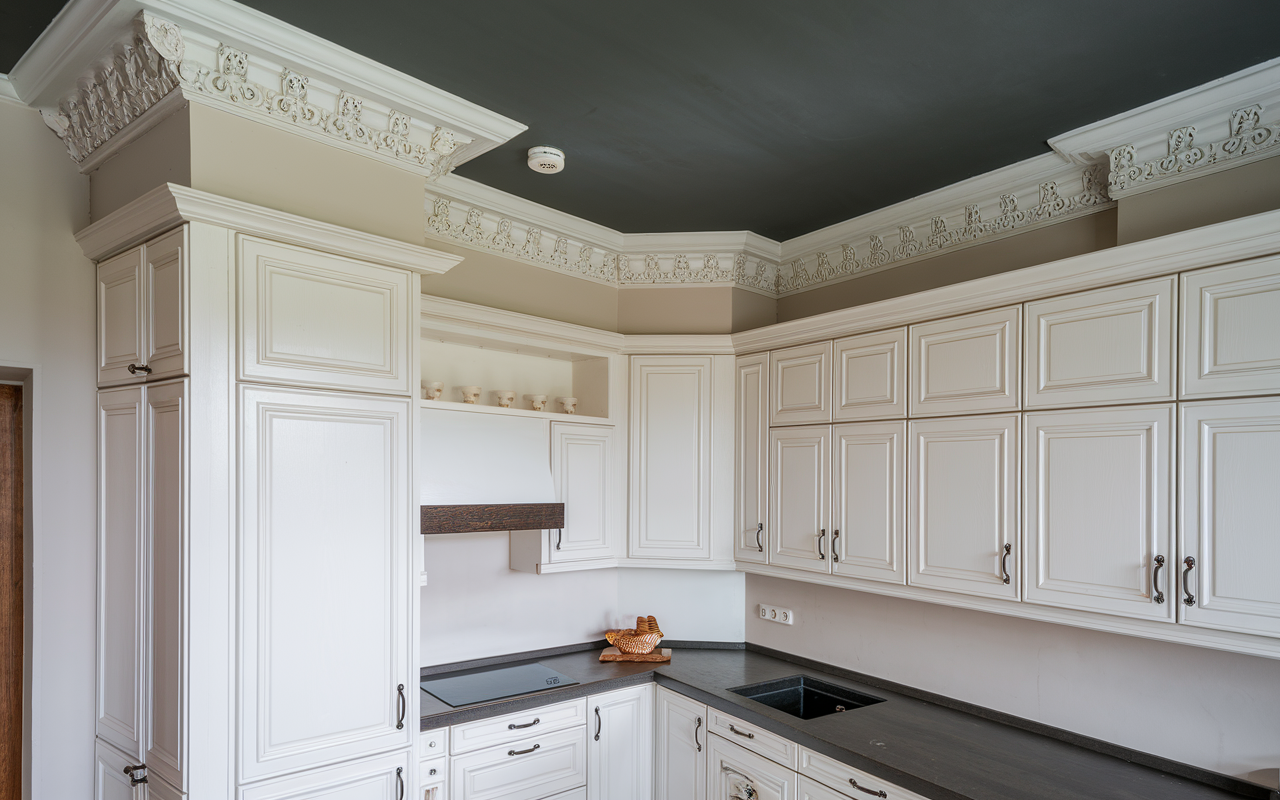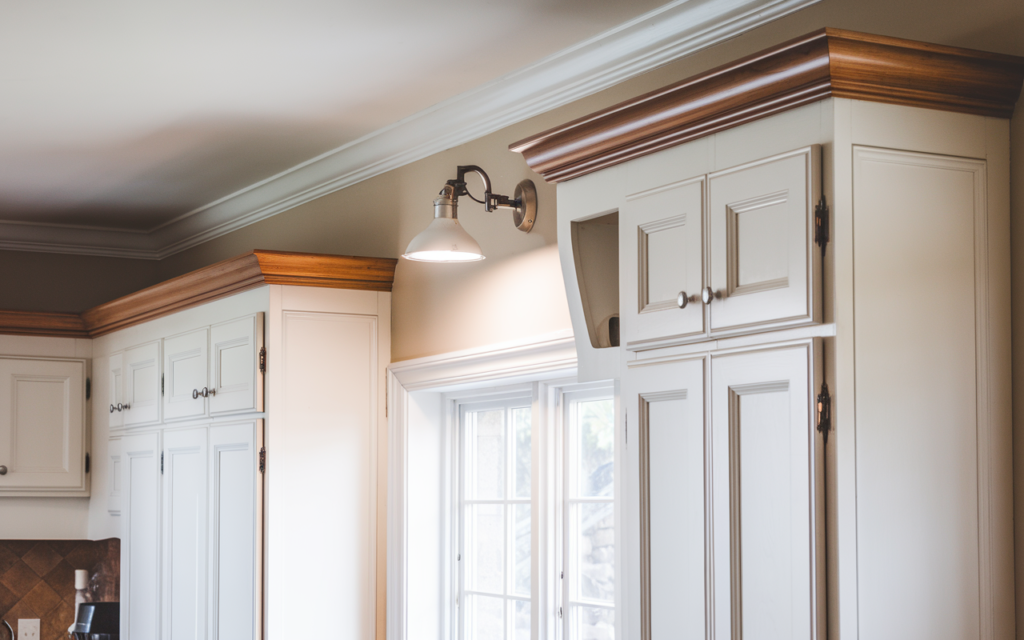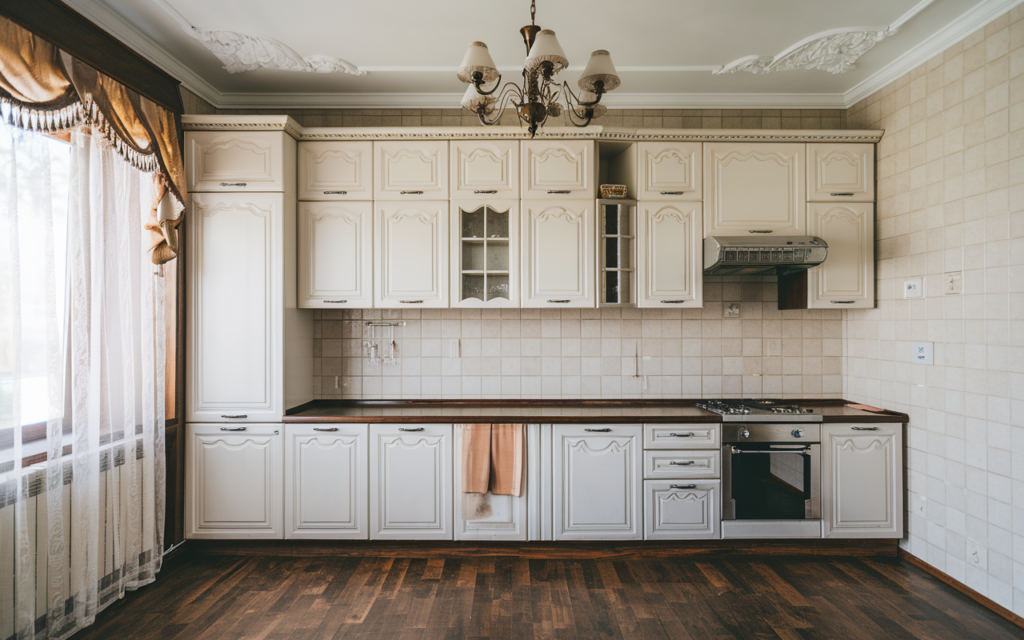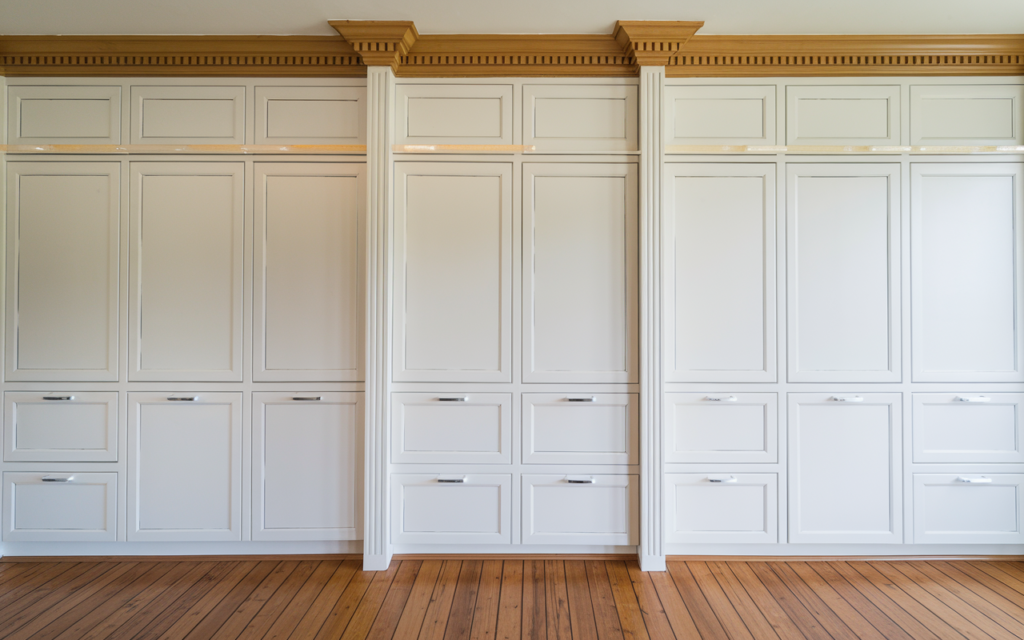
Introduction
Adding crown molding on cupboards is a timeless design choice that elevates any interior space. This decorative feature, traditionally used to transition between walls and ceilings, is now widely applied to cupboards to give cabinets a polished, high-end look. Crown molding is not just about aesthetics; it also enhances the continuity of cabinetry by closing the gap between the top of cupboards and the ceiling, creating a seamless, finished appearance.
This article will provide an in-depth exploration of crown molding, its types, styles, installation techniques, and the transformative effect it can have on kitchens, bathrooms, or built-in cabinetry. Whether you are renovating or building new, crown molding on cupboards can turn an ordinary space into an elegant one.
What is Crown Molding?
Crown molding refers to decorative trim that is installed where the wall meets the ceiling, but it can also be applied to cupboards. When used on cabinets, crown molding on cupboards serves to bridge the gap between the top of the cabinet and the ceiling. It offers a graceful transition and lends cabinetry a more cohesive and tailored look. Crown molding is often made from wood, MDF, or polyurethane, and it comes in a variety of profiles ranging from simple, sleek designs to ornate patterns.
The application of crown molding on cupboards has become popular for both traditional and modern kitchens, as it enhances the sense of height and sophistication. Crown molding can complement the style of cabinets, making them feel complete and well-integrated into the overall design scheme of the room.

Benefits of Crown Molding on Cupboards
Adding crown molding on cupboards offers several practical and aesthetic benefits that enhance both the appearance and functionality of cabinetry:
- Elegant Finish: Crown molding creates a seamless transition between cupboards and the ceiling, eliminating unsightly gaps. It provides a polished, tailored appearance that adds an element of luxury to the space.
- Height Illusion: In rooms with low or average ceiling heights, crown molding on cupboards draws the eye upward, creating the illusion of taller cabinets and a more spacious environment.
- Versatility: Crown molding complements a wide range of interior styles, from traditional to modern. Depending on the chosen profile, it can either add subtle detail or serve as a bold design statement.
- Hides Imperfections: Crown molding is effective in concealing small flaws at the top edge of cabinets, such as uneven ceilings or gaps that result from installation issues.
- Customization: Crown molding offers endless possibilities for customization. It can be painted or stained to match the cabinets, or it can be contrasted with different colors for a dramatic effect.
Crown Molding Styles for Cupboards
There are many styles of crown molding on cupboards, and the choice largely depends on the overall decor of the room.
- Traditional Crown Molding: This type is characterized by its curved and intricate profile. It is ideal for classic or formal kitchens and pairs well with raised panel cabinets.
- Contemporary Crown Molding: Sleeker and more understated, contemporary crown molding features simpler lines, making it perfect for modern or minimalist spaces.
- Stacked Crown Molding: Stacked molding involves layering two or more pieces of trim to create a more elaborate look. This style works well for grand, traditional kitchens with high ceilings.
- Cove Molding: This type of molding has a concave profile, giving it a softer appearance. Cove molding offers a subtle touch of elegance without being overpowering and is suitable for both modern and transitional interiors.
- Rope or Dentil Molding: Decorative options like rope or dentil molding feature intricate patterns that add texture and detail to cabinetry. These are often used in ornate, traditional kitchen designs.

Materials for Crown Molding on Cupboards
Choosing the right material for crown molding on cupboards is essential for both durability and aesthetics.
- Wood: Natural wood crown molding offers a timeless look and can be stained or painted to match the cabinetry. However, it may warp or expand with changes in humidity.
- MDF (Medium-Density Fiberboard): MDF is a cost-effective alternative to wood. It is easy to paint and resistant to warping, but it lacks the grainy texture of natural wood.
- Polyurethane: Lightweight and resistant to moisture, polyurethane crown molding is ideal for kitchens and bathrooms. It can be molded into intricate designs and is easy to install.
- PVC: PVC crown molding is highly resistant to moisture, making it a suitable option for humid environments. However, it may offer a different aesthetic appeal than wood or MDF.
Installation Techniques for Crown Molding on Cupboards
Installing crown molding on cupboards requires precision to achieve a seamless, professional look. Here are the key steps involved:
- Measure and Cut: Accurate measurements are essential. Use a miter saw to cut the crown molding at an angle, ensuring that the corners fit perfectly.
- Use Corner Blocks: If precise cuts are challenging, corner blocks can be used to connect the molding at the corners. This technique simplifies the installation process and adds a decorative touch.
- Apply Adhesive: For a secure fit, apply wood glue or construction adhesive to the back of the molding before attaching it to the cupboard.
- Secure with Nails: Use a nail gun to attach the molding to the top of the cupboards. Make sure the nails are evenly spaced to prevent gaps.
- Fill and Sand: Once the molding is in place, fill any gaps or nail holes with wood filler. Sand the surface for a smooth finish.
- Paint or Stain: Depending on the material, the crown molding can be painted or stained to match the cupboards or contrast with them for added visual interest.
Crown Molding on Cupboards: Design Ideas and Trends
Modern kitchens and bathrooms benefit greatly from the use of crown molding on cupboards. Here are a few design ideas to inspire your renovation:
- Two-Tone Molding: Create a dramatic effect by painting the crown molding a contrasting color from the cabinets. For instance, black molding on white cupboards creates a striking visual impact.
- Continuous Ceiling Line: In kitchens with high ceilings, extend the crown molding up to the ceiling for a constant, unified look that adds height and grandeur to the space.
- Incorporating LED Lighting: Install LED strip lights along the crown molding to illuminate the cabinets and create a warm ambiance. It is especially effective in contemporary kitchens.
- Layered Look: Use stacked molding to create depth and interest at the top of the cupboards. It works particularly well in traditional kitchens with ornate detailing.
- Minimalist Elegance: For a modern look, opt for sleek crown molding with simple lines. Paint it the same color as the cabinets to maintain a clean, cohesive appearance.

Maintaining Crown Molding on Cupboards
Proper maintenance ensures that crown molding on cupboards remains in excellent condition. Regular dusting prevents dirt buildup, and occasional touch-ups with paint or stain can restore the molding’s original beauty. In humid environments, such as kitchens and bathrooms, it’s essential to monitor the molding for signs of moisture damage. Using moisture-resistant materials like polyurethane or PVC can minimize maintenance needs.
Conclusion
Incorporating crown molding on cupboards is a transformative design choice that adds elegance, height, and visual interest to any space. Whether you prefer a traditional look with ornate molding or a modern aesthetic with clean lines, crown molding enhances the overall appearance of cabinets and ties the room together. With a variety of styles and materials available, homeowners have endless possibilities for customizing their cupboard designs.
The installation process, while requiring precision, is a worthwhile investment that delivers a polished and professional result. Crown molding is more than just a decorative feature—it is a practical solution for closing gaps, hiding imperfections, and creating a seamless transition between cabinets and ceilings. By choosing the right crown molding style and maintaining it properly, you can enhance the beauty and functionality of your cupboards for years to come.